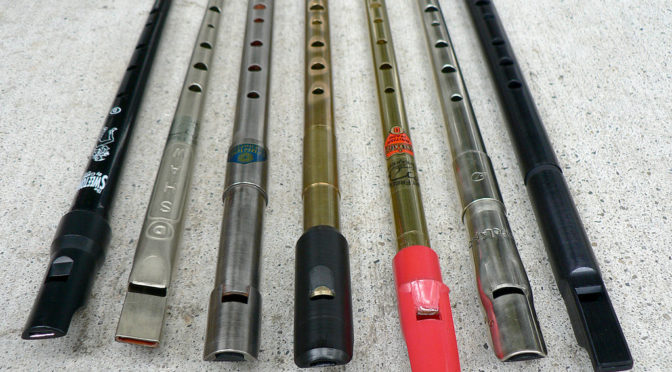Here is a condensed history of the Penny Whistle
he Irish whistle, The English Whistle, The English whistle, The Scottish whistle,French Flageolet, Tin whistle Penny whistle… and many more names are used all over the entire globe.
The whistle is 400 years old in one form or another and to call it someone’s invention may be a stretch. The whistle has contributed to shaping the clarinet and the recorder and of course, thousands of versions of the whistle.
History shows it is perhaps the most versatile music instrument on the planet. The confusion with it’s name comes from folks all over the world adopting the whistle and renaming the instrument for their country.
Here are some interesting Penny Whistle History notes:
Flageolets were invented in the 16th century by Sieur Juvigny in 1581.
In the 1600’s, whistles were called “flageolets” with a French made fipple mouthpiece.
William Bainbridge made the improved English flageolet in 1803.
There were many recorders, and a varieties of flageolets made during this period.
The tin whistle was invented by Robert Clarke in 1843 in Suffolk, England. His whistle was made using some wood, solder, and a piece of a tin plate. This is where the tin whistle name is alleged to have originated.
Clarke eventually manufactured his tin whistle and sold it for a penny on the streets of London. Thus, we now understand the root of the name of penny whistle.
So why is the name Irish tin whistle used for this English invention?
The original use of the words “fipple flute” was originated in 1911. A fipple refers to a plug in the end of a pipe to allow a measured amount air or liquid to flow through.
It is a noun and rarely used for any other purpose in language other than to describe the mouthpiece of a whistle.
Why is the whistle referred to as a “Fipple Flute”when the Flute has no fipple at all?
Today, the tin whistle is generally made with brass tubing and a plastic mouthpiece and is a higher pitched key. The penny whistle is a whistle made of polymer, piping, wood etc. and is “Low” or in the alto range.

